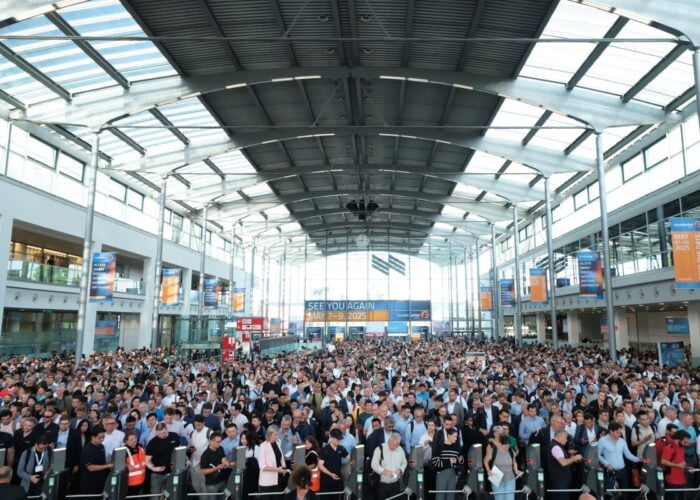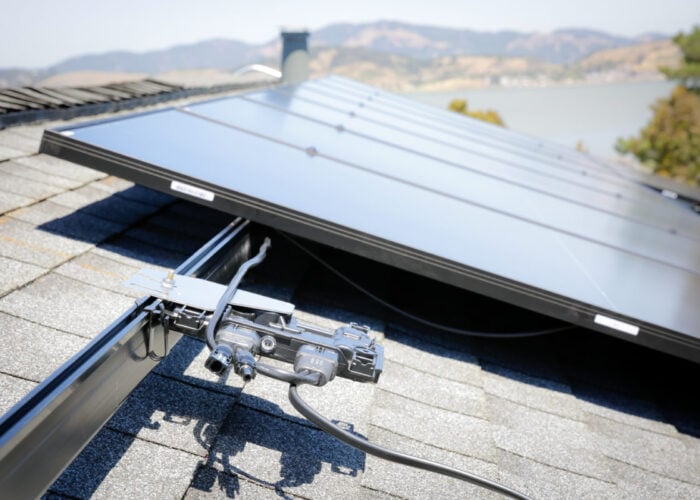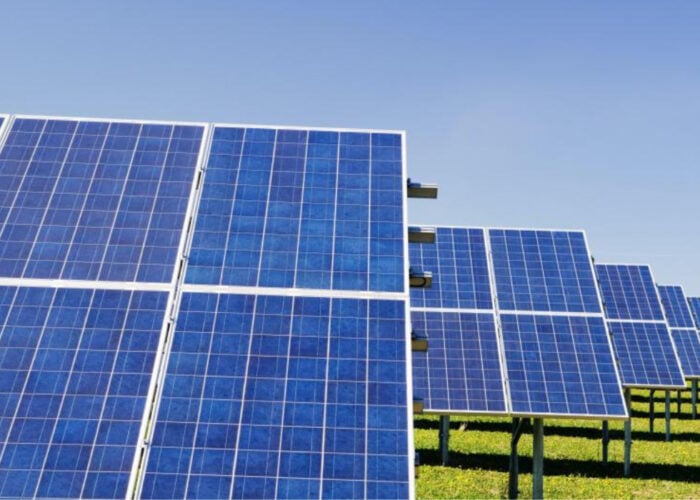Meyer Burger’s patented ‘SmartWire Connection Technology’ (SWCT) is designed to replace conventional silver-based busbars on solar cells using thin copper wires on both sides of the cell. Typically, 30 very fine copper wires are used for cell connection generating up to 2,000 contact points per cell that provide 5% higher power output compared to best-in-class 3BB (three busbar) technology, while reducing production costs.
Problem
Heterojunction (HJT) cells are very sensitive to high temperatures above 180°C that are typical of traditional busbar soldering. SWCT copper wire process takes place at lower temperature which not only enables contact to be made with high performance HJT cells, the lower temperatures further reduces energy costs during module production. Modules combining HJT cell technology with SWCT have achieved active area efficiencies of over 20%. The SWCT process is self-aligning and omits complicated ribbon lay-out on the contact surface of the cell.
Unlock unlimited access for 12 whole months of distinctive global analysis
Photovoltaics International is now included.
- Regular insight and analysis of the industry’s biggest developments
- In-depth interviews with the industry’s leading figures
- Unlimited digital access to the PV Tech Power journal catalogue
- Unlimited digital access to the Photovoltaics International journal catalogue
- Access to more than 1,000 technical papers
- Discounts on Solar Media’s portfolio of events, in-person and virtual
Or continue reading this article for free
Solution
The SWCT technology is claimed to significantly reduces the cost of production by eliminating the busbars on both sides of the cell and optimising finger widths thus reducing silver quantity by up to 80%. Based on the current price of 30 USD/troy ounce for silver, this reduction in silver results in up to 0,25 USD/cell lower material costs. SWCT’s fine copper wires reduce shading on the solar cell by 3% in comparison to cells with 3 busbars. Coupled with 2% lower series resistance, SWCT technology is claimed to increase the power output of a solar module by 5%. The round copper wires increase the amount of sunlight reflected onto the cells resulting in SWCT contacted modules beginning to produce electricity earlier in the day and stop producing electricity later in the day. This is claimed to lead to an increased energy yield of about 10% (kWh/kWp) compared to conventional busbar technology. SWCT is also said to increase cell stability and reduces the impact of possible micro-cracks on the power of the solar module. Micro-cracks are thought to be the most common cause of energy loss in solar modules.
Applications
SWCT is compatible to all crystalline silicon cell technologies: selective emitter, PERC and Heterojunction (HJT) in both p- and n-type silicon cells.
Platform
SWCT is compatible to all crystalline silicon cell technologies: selective emitter, PERC and Heterojunction (HJT) in both p- and n-type silicon cells. Wafer thickness can be as low as 100 µm and thinnest finger widths can be used in SWCT technology. This very future oriented technology can also be applied to the next generation of finger metallisation technologies. The SGS Fresenius Institute has already certified HJT modules with the innovative SmartWire Connection technology and Meyer Burger’s laboratories have successfully performed 4-fold IEC-compliant damp heat and 8-fold temperature cycles.
Availability
February 2013 onwards.







